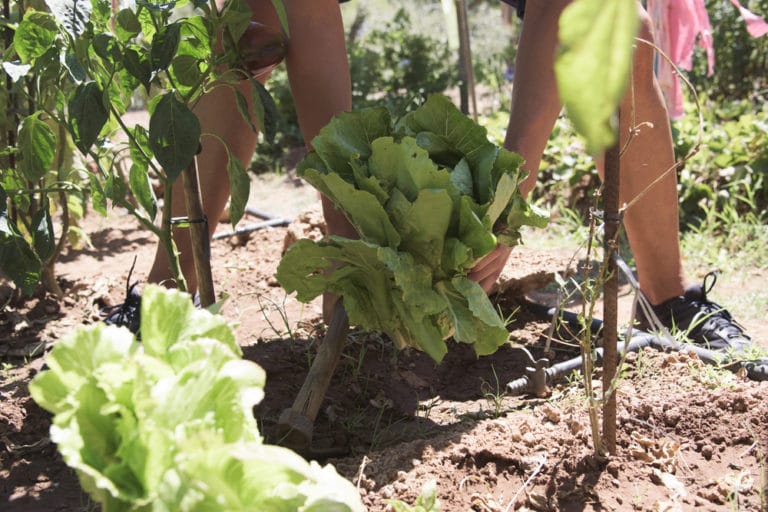
Imagine biting into a crisp, refreshing lettuce leaf, bursting with flavor, straight from your own garden. Sounds delightful, right? But getting that perfect homegrown lettuce isn't just about scattering some seeds and hoping for the best. Timing is everything, especially when it comes to this leafy green. So, let's dive into the secrets of growing lettuce and unlock the best time to sow those seeds for a bountiful harvest.
Unlocking the Secrets: When is the Ideal Time to Grow Lettuce?
Lettuce is a cool-season crop, which means it thrives in temperatures between 60°F and 70°F (15°C and 21°C). When temperatures rise above 80°F (27°C), lettuce tends to bolt – meaning it sends up a flower stalk, resulting in bitter-tasting leaves. This is crucial information when decidingwhen is the best time to grow lettuce. So, avoid growing lettuce in the heat of summer in most climates.
Essentially, there are two main windows for successfully growing lettuce:
- Spring: Starting lettuce in early spring, a few weeks before the last expected frost, allows you to enjoy a fresh harvest before the summer heat arrives.
- Fall: Planting lettuce in late summer or early fall, after the intense heat has subsided, provides a second chance for a delicious lettuce crop.
Spring Lettuce Planting: A Race Against the Heat
For spring planting, start seeds indoors about 4-6 weeks before the last expected frost. This head start gives the seedlings a chance to develop a strong root system before being transplanted outdoors. Direct sowing is also an option once the soil is workable and the danger of hard frost has passed. Keep an eye on the weather forecast and protect young plants from unexpected cold snaps with row covers or cloches.
Succession planting is a great strategy to extend your lettuce harvest throughout the spring. Sow a new batch of seeds every 2-3 weeks to ensure a continuous supply of fresh greens. Choose heat-tolerant varieties for later spring plantings to delay bolting as temperatures rise.
Fall Lettuce Planting: Extending the Growing Season
Fall is another excellent time to grow lettuce, particularly in regions with mild winters. Start seeds indoors about 6-8 weeks before the first expected frost, or direct sow once the weather cools down. Fall-planted lettuce benefits from the cooler temperatures and shorter days, which can lead to sweeter and more tender leaves.
Similar to spring, succession planting is beneficial for fall lettuce crops. Plant new seeds every 2-3 weeks to have a continuous supply of lettuce well into the fall and even winter in some areas. Select cold-hardy varieties for fall planting to withstand light frosts and extend the harvest season.
Factors to Consider When Deciding the Best Time to Grow Lettuce
While spring and fall are generally the best times to grow lettuce, several factors can influence the optimal planting time for your specific location and climate. These factors include:
- Your Climate Zone: Different climate zones have varying frost dates and temperature patterns, which will affect the length of your growing season. Consult a local planting calendar or your local agricultural extension office for guidance on optimal planting times in your area.
- Specific Lettuce Variety: Some lettuce varieties are more heat-tolerant or cold-hardy than others. Choose varieties that are well-suited to your local climate and the expected temperature conditions during the growing season. For example, Romaine lettuce is generally more heat-tolerant than Butterhead lettuce.
- Soil Temperature: Lettuce seeds germinate best in soil temperatures between 60°F and 70°F (15°C and 21°C). Use a soil thermometer to monitor the soil temperature before planting.
- Sunlight: Lettuce needs at least 6 hours of sunlight per day to thrive. Choose a location that receives adequate sunlight, especially during the shorter days of fall and winter.
Extending the Lettuce Growing Season
There are several techniques you can use to extend the lettuce growing season and enjoy fresh greens for a longer period. These include:
- Using Row Covers: Row covers can protect plants from frost and cold winds, allowing you to start planting earlier in the spring and later in the fall.
- Growing in a Greenhouse or Cold Frame: Greenhouses and cold frames provide a controlled environment that can protect plants from extreme temperatures and extend the growing season significantly.
- Choosing the Right Varieties: As mentioned earlier, select heat-tolerant and cold-hardy varieties to withstand temperature fluctuations and extend the harvest season.
Consider investing in a reliable water delivery system to keep your lettuce plants hydrated, especially during warmer months. A qualitygarden hose 75 FT with 10-Function Nozzle, Leak-proof Metal Connector Water Hose, No Knots, Kink-Free, Lighter, Anti-Pets, Wear-Resistant, 3/4 GHT, Metal Hose for Garden, Yard, Outdoor like this one can make watering a breeze: https://amzn.to/3Yv E0Bo. A versatile75 ft garden watering hose will help you maintain moisture levels for healthy lettuce growth.
Tips for Successful Lettuce Growing
Once you've determined the best time to plant lettuce, follow these tips for a successful harvest:
- Prepare the Soil: Lettuce prefers well-drained soil that is rich in organic matter. Amend the soil with compost or other organic materials before planting.
- Water Regularly: Lettuce needs consistent moisture to thrive. Water deeply and regularly, especially during dry spells.
- Fertilize Sparingly: Lettuce is a light feeder. Apply a balanced fertilizer at planting time and again a few weeks later. Avoid over-fertilizing, which can lead to leggy growth and bitter-tasting leaves.
- Control Pests and Diseases: Monitor plants regularly for pests and diseases. Take action promptly to prevent problems from spreading. Common lettuce pests include aphids, slugs, and snails.
- Harvest Regularly: Harvest lettuce leaves as soon as they are large enough to eat. This encourages the plant to produce more leaves. Cut the outer leaves first, leaving the inner leaves to continue growing.
By understanding the ideal planting times and providing the right growing conditions, you can enjoy a bountiful harvest of fresh, delicious lettuce from your own garden. Happy gardening!